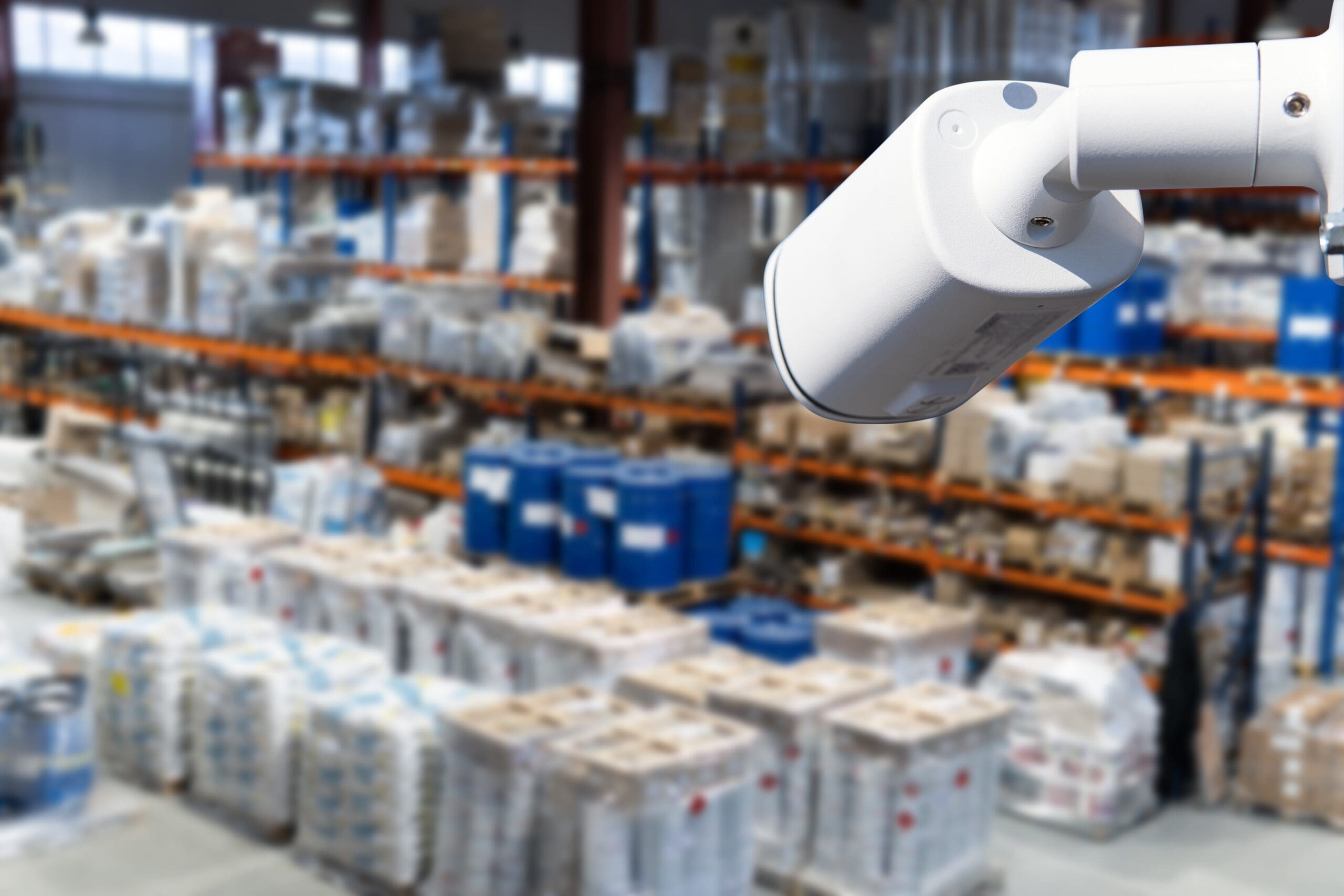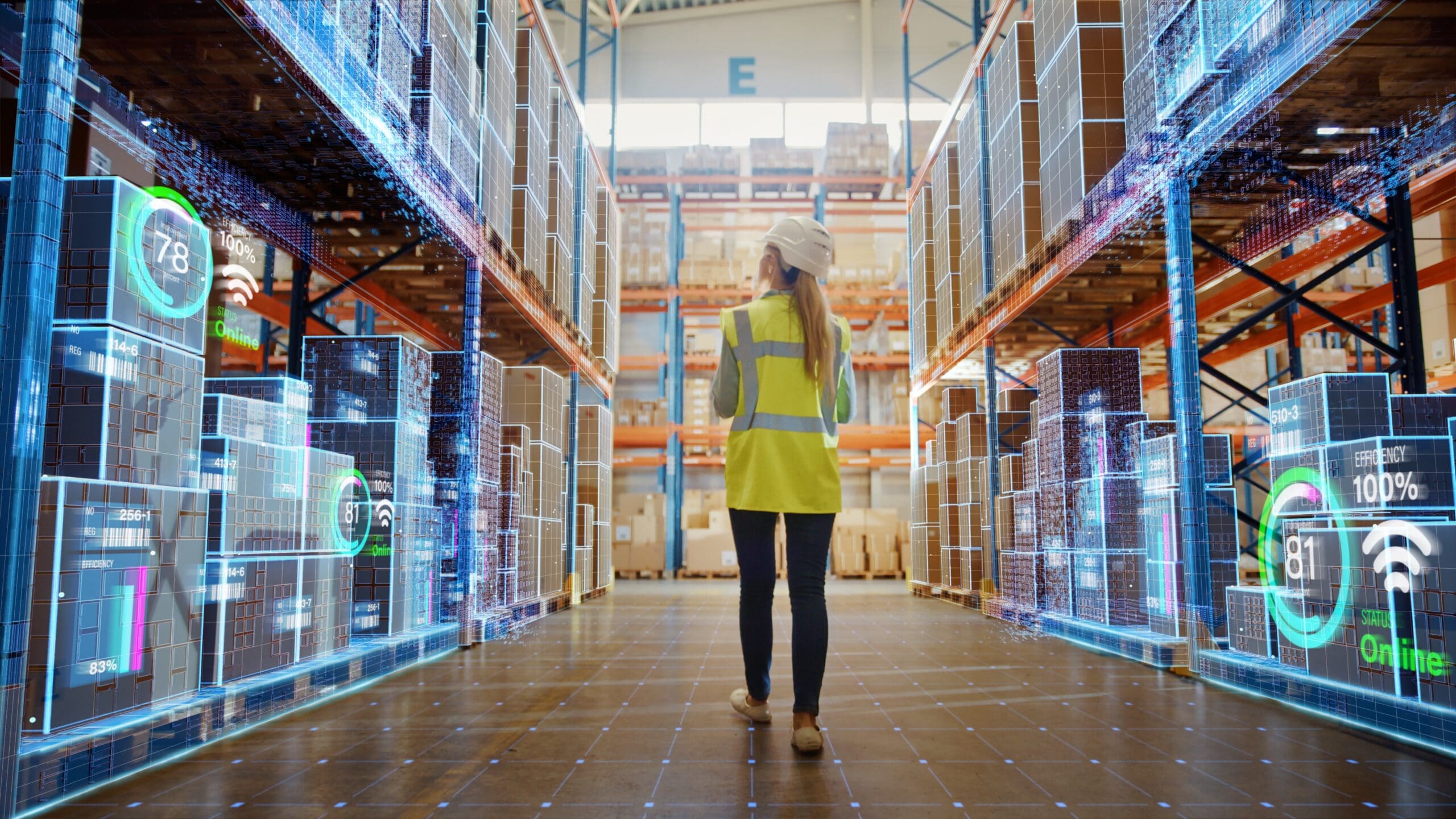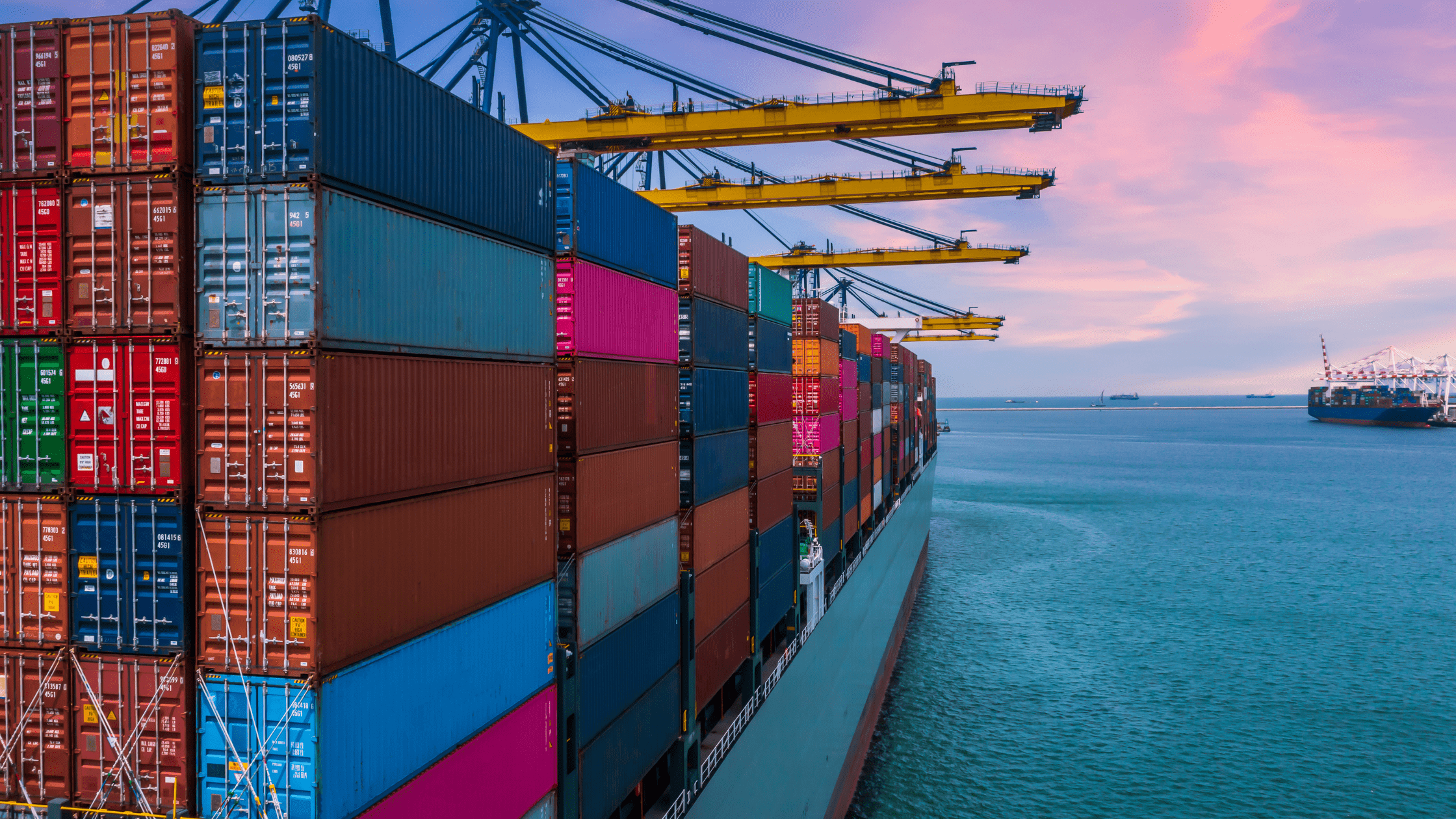Ecommerce warehouses have a lot going on. Between juggling daily tasks like inventory receiving and order fulfillment to more complex activities like cross docking and inventory audits, it can be hard to keep a pulse on everything happening within your facility.
But as hard as it is, effective warehouse management requires accurate and real-time information on warehousing functions. That’s why warehouse monitoring is so important for brands – with deep visibility and up-to-date information on how things get done in your warehouse, your brand is able to maximize operational efficiency.
In this article, we’ll dive deep into what warehouse monitoring is, the benefits of top-notch warehouse monitoring, and what key components to look for in a warehouse monitoring system.
What is warehouse monitoring?
Warehouse monitoring refers to the practice of observing, measuring, and tracking the conditions, materials, and activities within a warehouse.
Typically, warehouse monitoring systems leverage smart warehousing technology (such as surveillance cameras, sensors, IoT devices, etc.) to collect data, and process and interpret that data to help workers make informed decisions and act on insights.
Brands use warehouse monitoring systems to manage:
- Assets
- Inventory
- Environment
- Energy
- Problems
How technology is transforming warehouse monitoring
As warehouses and their functions have grown more complex, so has the technology used to monitor them. Workers no longer have to spend hours each day checking and record the same data, conditions, or activities; rather, brands can now use technology to automate a lot of monitoring tasks, and even achieve better insights.
Key components of a warehouse monitoring system
Here are some of the most effective technologies that brands have leveraged to improve their warehouse monitoring.
IoT devices
IoT (short for “Internet of Things”) refers to an online network that multiple devices and objects connect to, and through which those devices communicate and exchange data. IoT devices include RFID tags, sensors, and other tools that collects data about inventory, warehouse locations, storage conditions, or even how the inventory is handled.
RFID tags
RFID tags (short for “radio frequency identification tags”) are scannable labels that use radio waves to identify objects. With RFID tags, workers can scan items at various points as they move across your warehouse workflow. This information is then automatically sent to the warehouse management system, giving you real-time visibility of your inventory location and status.
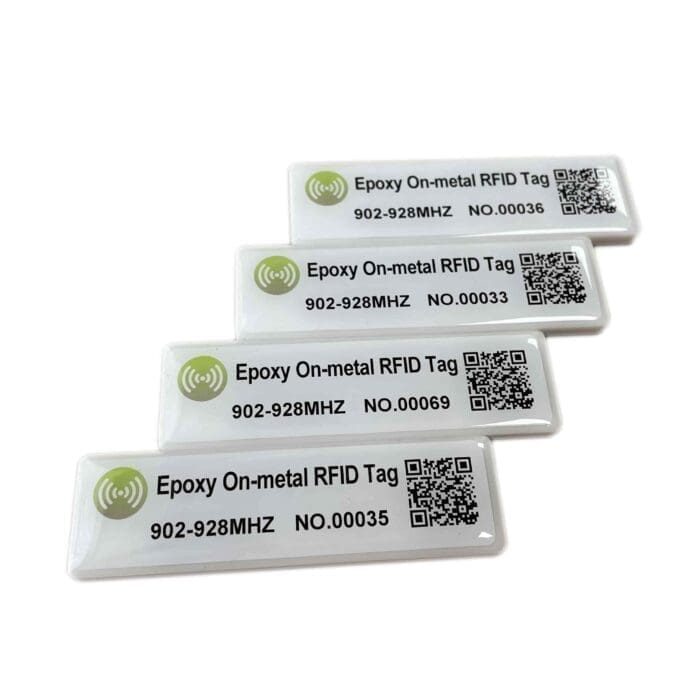
Sensors
Wireless sensors placed throughout the warehouse allow you to track various warehouse elements or activities without the need to be physically present.
LTH (light, temperature, humidity) sensors ensure that items are stored under proper conditions. This type of temperature monitoring is particularly important for cold storage warehouses as any deviation from the correct environment could lead to spoilage.
Some sensors can also be used to detect smoke, so you are instantly alerted in case of a fire. Others can track movement around different areas of the warehouse. You can even find sensors to closely monitor air quality, which may be necessary in some industries.
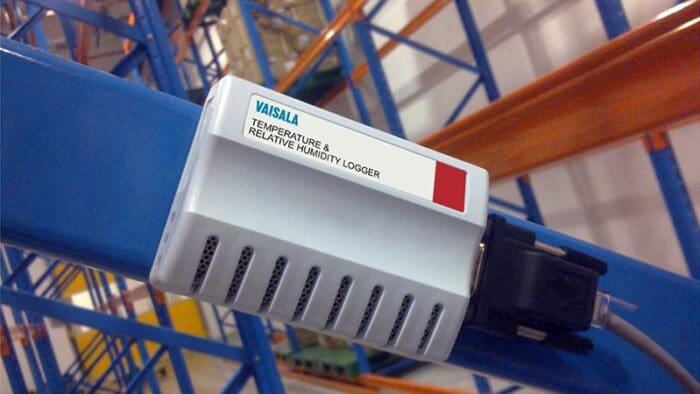
Alarms systems
For larger warehouses, it can be difficult to detect when something goes awry. As a result, there’s a higher risk of damage and theft that could cause huge losses for your business. Having alarm systems in place allows you to quickly get notified in case of any issue that needs to be fixed or investigated. You can get notifications for temperature changes, unusual movement, glass breaks, and more.
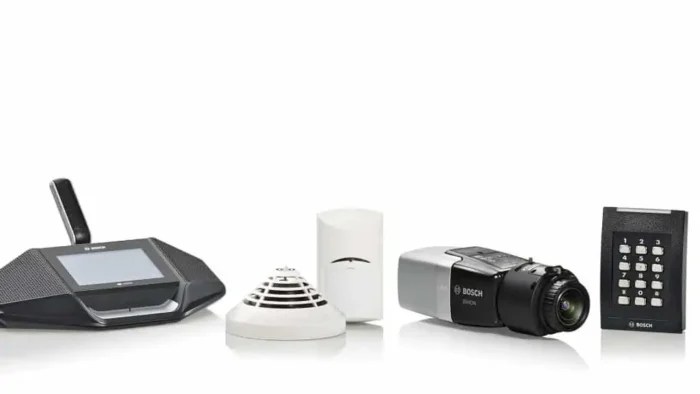
Surveillance cameras
Video surveillance also plays a vital role in monitoring your warehouse. You can make use of high-tech IP cameras having HD capabilities to get high-quality video monitoring.
Advanced cameras go beyond motion detection and even allow you to detect heat or read text. Smart surveillance systems using AI technology further simplify the monitoring process with the ability to check inventory availability, track lost or misplaced shipments, and more.
Centralized communication systems
Effective warehouse monitoring requires the ability to seamlessly communicate between different departments and across various locations. Managers and workers should be able to easily communicate with each other without having to physically travel across the warehouse. As such, having a centralized communication system such as a wireless or wired intercom system is essential to simplify the process.
Centralized software solutions
Finally, you also need centralized software solutions to collect information from various systems and unify them into a single comprehensive dashboard. That’s where solutions such as warehouse management systems (WMS) and unified IoT platforms come into play, allowing you to monitor different aspects of your warehouse in one place.
You can use these warehouse monitoring solutions to keep track of stock levels and inventory movement, as well as order fulfillment processes, without having to switch between multiple platforms.
Benefits of advanced warehouse monitoring systems
Advanced warehouse monitoring systems may seem like overkill, but in reality, they are one of the best value-adds to your business. Here are some of the biggest benefits of introducing a warehouse monitoring system to your facility.
Operational efficiency and accuracy
Warehouse monitoring systems provide you with real-time insights into your warehouse operations and inventory details. These insights can then be used to optimize your warehouse operations for efficiency and accuracy.
For example, if your monitoring system detects that one area of the warehouse is consistently experiencing backlogs, you may want to rearrange inventory or time picking waves differently to alleviate the congestion. This can help workers pick order faster, improving warehouse efficiency.
These monitoring solutions can also boost your inventory and order accuracy. By letting you track your inventory levels, location, and movement in real time, you minimize the risk of human errors such as double counting and miscalculations that could result in inaccuracies. With the addition of scannable IoT devices like RFID tags, you can also drastically lower the chances of a picker picking the wrong items, which helps improve accuracy rates.
“We’ve always had a pretty low fulfillment error rate. But keeping that number low has become harder the larger we get. When we were small, everyone knew what products were called and where they were in the warehouse. But now we have over 200,000 SKUs on our website, 190,000 of which are stowed in our warehouse. It became difficult to make sure everyone was doing fulfillment in the right way.
ShipBob’s WMS makes it almost impossible to do things wrong. Eliminating the potential for human error during picking and packing has been great. That was our biggest problem before. Last time I checked, our error rate was less than 1%. We’re shipping out over 10,000 orders per month.”
Clint Sanders, VP of Operations of Bunker Branding
Predictive analytics for inventory management
When you get real-time and accurate visibility into your inventory data, you can better manage your inventory. Inventory analytics and real-time inventory tracking help you forecast demand more accurately, and time replenishment to avoid stockouts or overstocking. Some warehouse monitoring solutions even automatically alert you when stock dips below a certain level, so you don’t have to constantly check.
These capabilities not only save you from spending money on inventory you don’t need, but also keep inventory holdings costs in check. In addition, you are less likely to disappoint customers with backorders and delays.
Security and safety
Stepping up your warehouse monitoring efforts is one important aspect of keeping your facility safe and secure. With so much going on, it can be hard to sense when something is out of place on your own – but with a monitoring system, you can quickly detect and address hazards or security issues.
For example, glass break sensors help you to identify forceful entry and take timely action. Similarly, if the warehouse temperature changes beyond the desired level, you can quickly get notified and take the necessary steps to get it back to the right temperature.
This allows you to improve warehouse safety and prevent issues such as break-ins, thefts, and damage.
How to monitor your warehouse operations with ShipBob
A warehouse management system (or WMS) is a centralized software solution that helps you track and manage all your warehousing operations in one place. As such, a WMS plays a vital role in warehouse monitoring.
ShipBob offers merchants a leading WMS to use in their own warehouses. This WMS is an all-in-one platform through which you can manage all your warehousing tasks, including storage, order processing, picking, packing, and shipping.
Here are some of the ways that ShipBob’s WMS helps merchants improve their warehouse monitoring, plus optimize their operations for efficiency.
Unlock advanced fulfillment analytics
ShipBob’s WMS comes with advanced analytics capabilities that provide you with real-time data on your warehousing and fulfillment performance. You can gain access to a robust selection of warehouse KPIs to assist you with your monitoring process, including:
- Order counts at different fulfillment stages
- Average fulfillment time
- Average fulfillment costs
- Average storage cost per unit
- OTIF rate
- On-hand inventory
- SKU performance over time

These metrics give you insights into how various warehouse processes are performing. You can then use these insights to audit your warehouse and pinpoint areas where you can improve efficiency and reduce operating costs, and subsequently further optimize your warehouse operations.
For instance, if you notice that your average fulfillment times has gone up recently, you could inspect your warehouse’s picking and packing processes and implement new strategies (like batch or zone picking) to speed up the processes.
Integrate warehouse monitoring with existing systems
Having a single system to manage various aspects of your warehouse is crucial for efficient warehouse monitoring. It minimizes the need to switch between multiple platforms, while also reducing the risk of lost or inaccurate data.
As such, you need a warehouse monitoring solution that can integrate with existing legacy software and give you a comprehensive look into your warehouse activities.
ShipBob offers a robust partner ecosystem, allowing you to seamlessly integrate ShipBob’s WMS with leading ecommerce platforms and marketplaces. Additionally, you can integrate with various tools for managing inventory, orders, freight, shipping, and returns. This ensures that you have a cohesive ecosystem to provide you with comprehensive warehouse monitoring.
For example, an integration with returns management platforms like AfterShip will allow you to keep track of incoming returns so your warehouse can be easily updated with the latest inventory data. Similarly, integration with Cin7 helps you centralize your sales channel operations and ensures that your inventory records are always accurate as you purchase and sell stock and move it between different locations.
Track inventory levels and order status in real-time
ShipBob’s WMS provides real-time inventory tracking, with visibility into up-to-date inventory levels across all SKUs and at various storage areas. This type of location-specific inventory visibility is essential for effective warehouse monitoring, as you can clearly see how many units are at different parts of the warehouse.
This allows for accurate inventory counts, ensuring inventory accuracy and timely recordings to avoid stockouts. That means you can clearly see when you’re running low on stock for a particular SKU and replenish your inventory in time. Similarly, you can accurately forecast your inventory needs, which will allow you to reorder just the right amount to prevent excess inventory and minimize inventory costs.

Optimize your warehouse layout
Your warehouse setup plays an important role in your warehouse efficiency. If your layout allows workers and vehicles to move seamlessly in a logical flow, it helps your warehouse operations run much more smoothly.
When you implement ShipBob’s WMS, you get hands-on support to optimize your warehouse layout for improved efficiency. This may involve rearranging workstations or adjusting storage for a logical flow of operations, which will allow you to improve the efficiency of your warehousing operations.
Warehouse monitoring starts with ShipBob’s industry-leading WMS
Hear from two DTC brands about how they’ve realized significant improvements in their warehouse monitoring and management by leveraging ShipBob’s WMS.
Infuze Hydration reduced picking errors and increased fulfillment speed
Infuze Hydration is a beverage tech company that produces an innovative water bottle that turns your water into flavored water. With the range of customizations they offer, the brand has to deal with a variety of SKUs. The lid alone has 26 different parts in it, which can create a lot of confusion and errors.
They were relying on a complex system that they trusted only two people with. Otherwise, it resulted in too many errors. With the WMS offering multiple checks and balances along the way, they’ve been able to reduce their picking error rate by 30%.
During their switch to ShipBob, they had on-site onboarding on how to group and link parent SKUs in the WMS. They could immediately start shipping 700 orders a day when they were only shipping 300 orders during the same timeframe – a 130% increase in fulfillment speed for the brand.
“We wanted something that would be both functional and easy for people to use. We chatted with ShipBob, and found the perfect solution that combines best-in-class fulfillment, shipping, inventory tracking, and warehouse management capabilities.” Rick Corbridge, COO at Infuze Hydration
Pit Viper increased order accuracy and improved overall efficiency
Pit Viper is a brand of unique, retro-inspired sunglasses with a warehouse operation that was experiencing rapid growth. Previously, they had only been relying on label generation software to ship out their orders, which only helped them with creating shipping labels. The software couldn’t help them optimize warehouse efficiency, which meant that they were outgrowing the solution.
To top it all, Pit Viper was experiencing a lot of mispicks, which often resulted in them letting the customers keep the products because it was too complicated to arrange a return.
Implementing ShipBob’s WMS was a game-changer, allowing them to eliminate more than 2,000 mispicks a year. They went from a 92% order accuracy rate to a 97% accuracy rate. The improved accuracy rate subsequently allowed them to save on labor costs while reducing lost inventory and minimizing the need for double shipping.
Moreover, the WMS allowed them to create more efficient routes through the warehouse. This significantly reduced the time taken to pick, pack, and ship out orders, which improved their overall efficiency.
Sophisticated warehouse monitoring enables ecommerce businesses to get real-time and accurate visibility into their operations. This gives them timely and updated insights to take necessary actions and improve their warehouse efficiency.
“Our order picking and routing has also greatly improved with ShipBob. With ShipBob’s WMS, we can create the most efficient routes through the warehouse, which has cut down on an insane amount of time and made picking, packing, and shipping so much more efficient.
Running a warehouse is unpredictable. But ShipBob has definitely helped with that. Thanks to ShipBob’s WMS, we have access to more data. Now we know how many orders an employee can complete in an hour so we can forecast for labor a lot better than we did before.”
Jourdan Davis, Operations Manager at Pit Viper
Interested to see how ShipBob’s WMS can improve your warehouse monitoring? CLick the button below to find out more.
Warehouse monitoring FAQs
Below are answers to the most commonly asked questions about warehouse monitoring.
How customizable are warehouse monitoring systems to specific industry needs?
Warehouse monitoring systems can sometimes be customized to your industry-specific needs. Some systems are also designed to integrate easily with other platforms and tools, so they will connect to your existing systems more easily.
Can ShipBob’s WMS help me monitor my warehouse?
Yes. ShipBob’s WMS comes with advanced analytics and tracking capabilities to monitor various warehouse processes. This includes management features for inventory, orders, picking, packing, shipping, and returns.
How can real-time warehousing improve supply chain efficiency?
Real-time warehousing improves your supply chain efficiency by providing you with real-time insights to make informed and timely decisions.
What future technologies are expected to impact warehouse monitoring systems?
Warehouse monitoring systems are likely to be impacted by advancements in IoT solutions and artificial intelligence technology.
What are the challenges in implementing a warehouse monitoring system, and how can they be overcome?
Implementing a warehouse monitoring system can be challenging due to the complexities involved with collecting real-time and accurate data from a variety of sources. You can overcome this challenge by having a centralized software system (often a WMS) that can integrate with those data sources.
